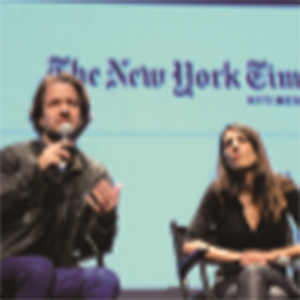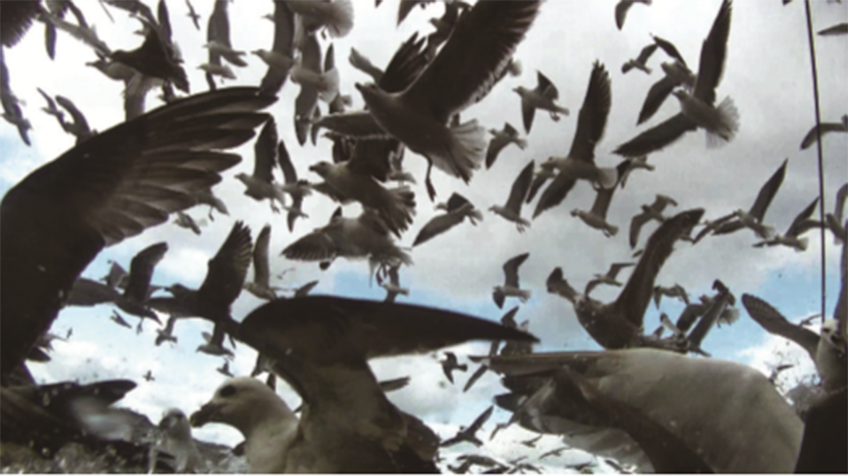Leviathan
Véréna PARAVEL, Lucien Castaing-TAYLOR
- USA, France, UK
- 2012
- 87min
- DCP
- color
Synopsis
The film starts with the description of Leviathan in Job Chapter 41, Old Testament, the fearless and arrogant sea monster having swordproof scales, breathing fire from its mouth, spewing out smoke from its nose. The Book of Isaiah or The Book of Psalms also mentioned this imaginary monster as a symbol that is diametrically opposite to God’s principle. On the other hand, the English philosopher from the 17th century Thomas HOBBES wrote in Leviathan, a masterpiece covering the nature, politics, human and religion, that our citizens can enjoy peace and stability thanks to Leviathan, a finite God ruling us under the immortal God. The sovereign authority or the nation, protecting the citizens’ lives in the “war of all against all”, is called Leviathan, the king of the arrogance “with the enormous power which can overwhelm every haughtiness” by him. The modern nations established under the influence of Hobbes do not hesitate to wage a world war in order to accomplish their purposes. Meanwhile, English literature like Shakespeare or Milton sees Leviathan as a symbolic expression of power and speed, vastness or a gigantic ship. The setting of this documentary film Leviathan is in New Bedford, where it is the starting point of Moby-Dick by H. Melville. Two producers who are anthropologists as well get on a trawl-boat carrying an ultralight camera, Go Pro and DSLR camera without any crews. We can see and hear the landscapes such as the waves and storms tossing a boat, the sky ruled by a flock of seagulls, the ocean floor, the bloody deck with fish meats and the industrialized site of operations through Leviathan. It takes quite different representations from ones of any other documentary films about nature or anthropological studies. The directors intentionally refuse to center the human view in the film. On the boat full of natural roar and mechanical noise, fishermen communicate with each other by shriek instead of human languages. Also, fishes appear in the end credits with people’s names. To identify Leviathan in this film, the genealogy of anthropology studies and esthetic experiences from Jean ROUCH and FRANJU to BRAKHAGE, PELESHIAN is only for the audiences to experience and flourish the “hellish” sense. (SHIN Eun-shil)
Director
-

Véréna PARAVEL
Filmmakers, artists, and anthropologists, whose work at the Sensory Ethnography Lab at Harvard University. Their work is in the permanent collection of the Museum of Modern Art (NY), and the British Museum, and has been screened at the AFI, BAFICI, Berlin, CPH:DOX, Locarno, NewYork, Toronto, and Viennale film festivals. PARAVEL’s films include Foreign Parts, Interface series and 7 Queens; and Castaing-TAYLOR’s Hell Roaring Creek, The High Trail and Sweetgrass. Leviathan (2012) Foreign Parts (2010) Interface Series (2009-10)
-

Lucien Castaing-TAYLOR
Filmmakers, artists, and anthropologists, whose work at the Sensory Ethnography Lab at Harvard University. Their work is in the permanent collection of the Museum of Modern Art (NY), and the British Museum, and has been screened at the AFI, BAFICI, Berlin, CPH:DOX, Locarno, NewYork, Toronto, and Viennale film festivals. PARAVEL’s films include Foreign Parts, Interface series and 7 Queens; and Castaing-TAYLOR’s Hell Roaring Creek, The High Trail and Sweetgrass. Leviathan (2012) Foreign Parts (2010) Interface Series (2009-10)
Credit
- ProducerVéréna PARAVEL, Lucien Castaing-TAYLOR
- Cinematography Véréna PARAVEL, Lucien Castaing-TAYLOR
- Sound Jacob RIBICOFF, Ernst KAREL
PRODUCTION COMPANY & WORLD SALES
PRODUCTION COMPANY & WORLD SALES Arrete Ton Cinema
E-mail arretetontoncinema@gmail.com
